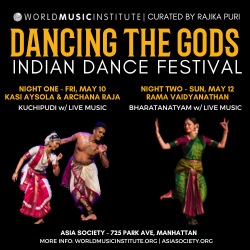Testimony to City Council Committee on Economic Development and Committee on Cultural Affairs, Libraries and International Intergroup Relations
Monday, November 15, 2021
Testimony to City Council Committee on Economic Development and Committee on Cultural Affairs, Libraries and International Intergroup Relations
On behalf of Dance/NYC (www.dance.nyc), a service organization that serves over 5,000 individual dance artists, 1,200 dance-making entities, and 500 non-profit dance companies and the many for profit dance businesses based in the metropolitan New York City area, including BIPOC (Black, Indigenous, and Peoples of Color) dance workers, immigrants, and disabled dance workers. Dance/NYC embeds the values of justice, equity, and inclusion into all aspects of its operations and frames the following requests through the lens of those values. Dance/NYC joins colleague advocates working across creative disciplines in thanking you for your leadership and requesting:
- The inclusion of arts and cultural businesses in recovery funding for the tourism industry, specifically to comply with public health mandates;
- The prioritization of additional funding allocations to organizations experiencing the highest levels of impact from the pandemic; and
- The continued expansion of City-funded media campaigns to support the nonprofit arts and culture sector in addition to Broadway and for-profit entertainment.
Dance/NYC expresses gratitude to the City Councilmembers, City Officials, Mayor’s Office and other dedicated workers who have contributed to the recovery of the City’s arts and culture sector. With gratitude, it believes that there are comprehensive improvements and investments to be made in order for arts and culture to continue as a primary engine for tourism.
New York City is a global tourist destination for arts and cultural innovation and legacy, and with the reopening of international travel, the City’s tourism industry will boost recovery and economic activity across industries. The arts and culture sector is the number one driver of tourism to the state, generating $110 billion in economic activity according to the Comptroller’s Report on the Creative Economy (https://comptroller.nyc.gov/reports/the-creative-economy/). Of that economic activity, dance plays a key role, with the nonprofit dance sector contributing approximately $300 million annually. This figure is largely understated, as it only includes organizations with 501(c)(3) status. The actual contribution is likely much larger with the inclusion of fiscally sponsored organizations, for profit dance studios and independent arts workers. The arts and culture sector serves as a foundation for the City’s tourism industry that cannot operate sustainably without targeted recovery funding and dedicated financial support from the City.
A healthy arts ecology is interconnected with many other industries, and event-related spending by arts audiences generates valuable revenue in tourism sectors. According to the Americans for the Arts Arts & Economic Prosperity report (https://bit.ly/AFTAartsandeconomicprosperity5), the average arts attendee spends approximately $31.47 per person per event beyond the cost of admission on expenses like meals, retail, parking, lodging, local transportation, childcare, and souvenirs. These dollars provide vital income to local merchants, energize the arts districts, foster a healthy residential real estate market, and pay salaries and wages in non-arts sectors. Additionally, nonlocal audience spending is significantly higher ($47.57) than local audience spending ($23.44), evidence that a community harnesses measurable economic rewards by attracting nonlocal arts attendees and cultural tourists. Investing in arts and culture supports jobs, generates government revenue, and bolsters the cornerstone of tourism.
Dance/NYC conducted the Coronavirus Dance Impact Study (http://bit.ly/DNYCImpactSurvey), a comprehensive research study on the impact of COVID-19 on the dance sector. Dance organization, group, and project budgets shrunk by nearly one-third (31% on average) due to earned and contributed revenue losses. These budget shrinkages are directly due to reductions in programming for local patrons and cultural tourists. As a result, 18% of dance organizations, groups, and projects believe that permanent closure is likely or extremely likely; 84% of those facing permanent closure have budgets under $100K. Separately, Dance/NYC has been tracking organizational closures and is aware of at least 26 organizations and facilities that have permanently closed their doors due to the pandemic; the majority of which includes studio facilities which are primarily small businesses and beacons in their communities. In Dance/NYC’s Defining “Small-Budget” Dance Makers in a Changing Dance Ecology (www.dance.nyc/sbdmdata2020), we found that 83% of these organizations have existed in NYC for over a decade and 43% have existed for more than 20 years as drivers of tourism in their communities. Small budget arts and cultural organizations are feeling the most acute impact of the pandemic and should be prioritized for additional relief and recovery funding for tourism-related industries. These challenges to organizational stability put the arts and culture as a whole at risk of losing capacity to contribute to the tourism economy.
Pandemic-related interruptions in programming, economic hardship resulting from City mandates without City infrastructural or economic support, and permanent closures in the arts and culture sector result in a direct impact to tourism and its related industries. The impact of these hardships goes far beyond the businesses themselves. For arts and cultural venues and institutions that provide services to independent arts workers, the repercussions of organizational interruptions, displacement, and closures are compounded; losing access to these spaces puts the working lives of arts workers and the art itself at risk. The effects of the pandemic and the ongoing affordability crisis is manifesting in a migration of arts workers from the City. According to the Coronavirus Dance Impact Study, as of late 2020, 5% of the dance workforce had relocated permanently and another 17% were considering permanent relocation, with 43% considering long-term career options outside of dance. These wide-ranging impacts are felt most acutely by arts workers and organizations led by and primarily serving BIPOC, immigrants, disabled people, and other communities with less access to capital reserves, which in turn stands to exacerbate historical inequities in the field. Fewer and less representative arts workers and arts organizations in the City directly results in losses to cultural diversity, tourism opportunities, and revenue generation across sectors.
Arts and cultural businesses were the first to shut down and are among the last to reopen, with performing arts organizations also being subject to ongoing restrictions through public health mandates. While the public health goals are laudable, their implementation stands to cause economic hardship to the City’s still struggling arts and cultural field, particularly the hardest-hit small budget organizations. In addition to increased expenses related to public health mandate compliance, businesses are confronting an ongoing loss of revenue due to decreased attendance to programming, classes, and performances. City funding allocations to facilitate compliance with public health mandates is crucial to supporting organizational capacity to provide programming to patrons and tourists, as well as ensuring the long-term sustainability of the City’s arts and cultural sector. It is crucial that affected businesses, particularly small budget arts and cultural organizations, have access to City funds to comply with City mandates. We ask that the City look to relief funds intended to support the recovery of the tourism industry to ensure that arts and cultural businesses survive the implementation of mandatory public health regulations.
Direct investment in arts and cultural businesses is crucial, in addition to supporting the intrinsic value and visibility of their programming. The recently announced multi-million dollar “Welcome Back to New York” marketing and communications campaign puts mainstream Broadway shows front and center as a primary attraction for tourists traveling to the City. While this campaign is commendable, the City must also recognize that the vibrancy and value of the arts and culture sector reaches far beyond Broadway. Expanding this media campaign to include nonprofit arts and cultural organizations and institutions throughout the five boroughs would not only support their programming, but also bring much-needed economic investment and tourist dollars to neighborhoods hit hardest by the pandemic. An equitable, sustainable City-wide recovery requires a City-wide investment in the people, organizations, and industries that drive economic activity and make every neighborhood in this great City unique and vibrant.
By directly supporting the economic viability and visibility of arts and cultural organizations, these measures provide much-needed relief during the pandemic and ensure the long-term capacity of arts and cultural organizations to serve arts workers and their communities. Dance/NYC joins the City’s arts and culture sector in asking for the above measures to ensure the longevity of small businesses and arts and cultural organizations that have long been an essential part of the communities in our City. Arts and culture can lead the City’s economic recovery, and these investments can help ensure their resilience, growth, and long-term survival.
For Dance/NYC and its constituents, the most urgent priorities are:
- The inclusion of arts and cultural businesses in recovery funding for the tourism industry, specifically to comply with public health mandates;
- The prioritization of additional funding allocations to organizations experiencing the highest levels of impact from the pandemic; and
- The continued expansion of City-funded media campaigns to support the nonprofit arts and culture sector in addition to Broadway and for-profit entertainment.
Taken together, these measures stand to support arts and culture as a key driver of the tourism economy in the City. Dance/NYC thanks you for your consideration and commends your leadership and ongoing efforts to support the recovery of the arts and culture sector as tourists return to the City. Dance/NYC looks forward to the opportunity to ensure that New York City remains a vibrant capital for arts and culture.
##




